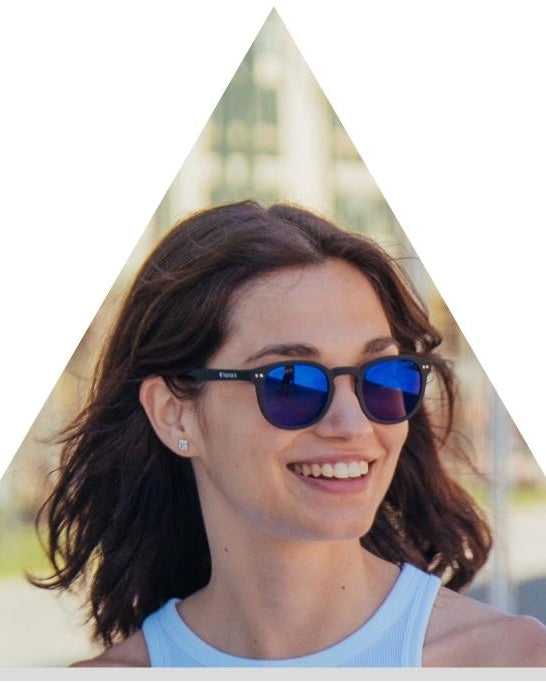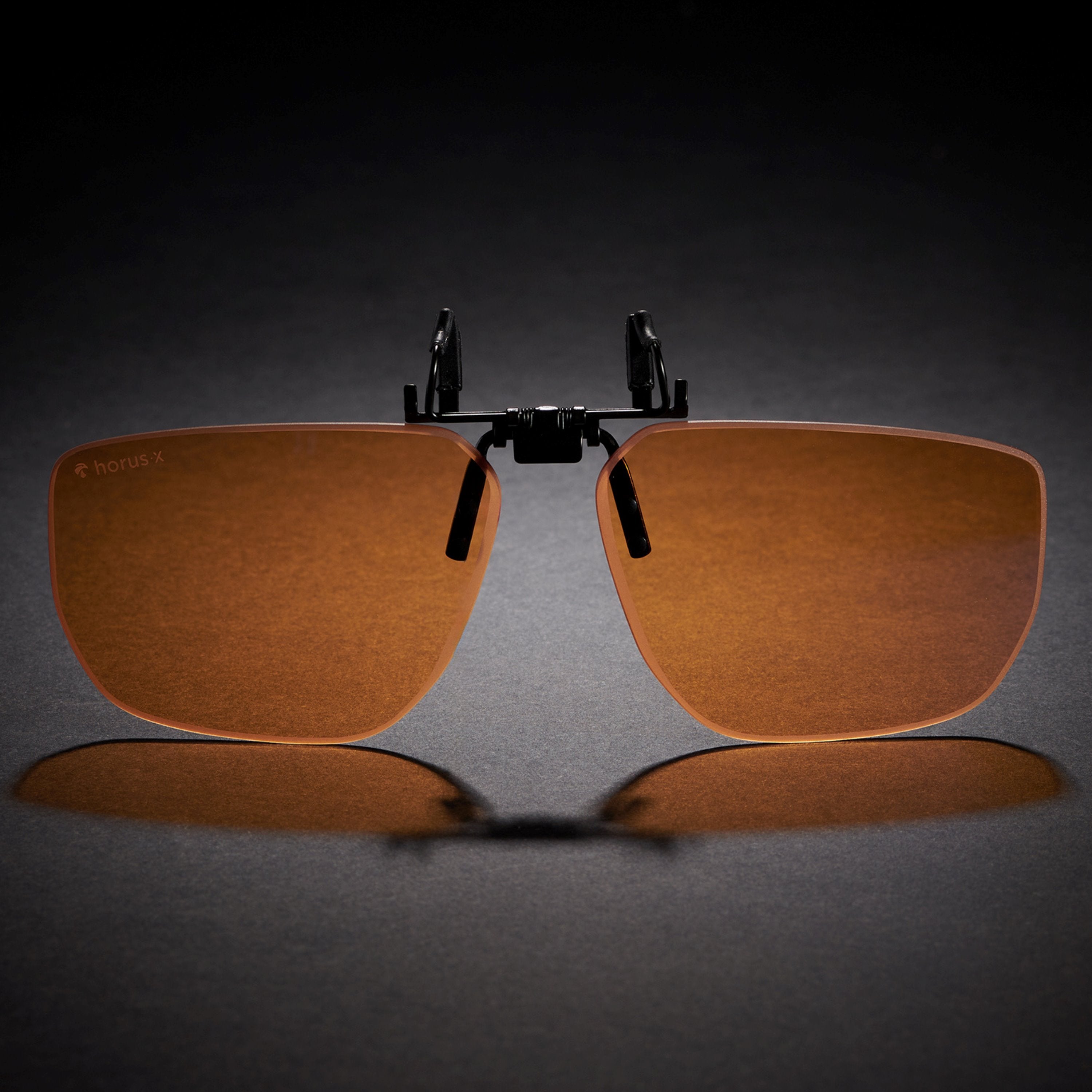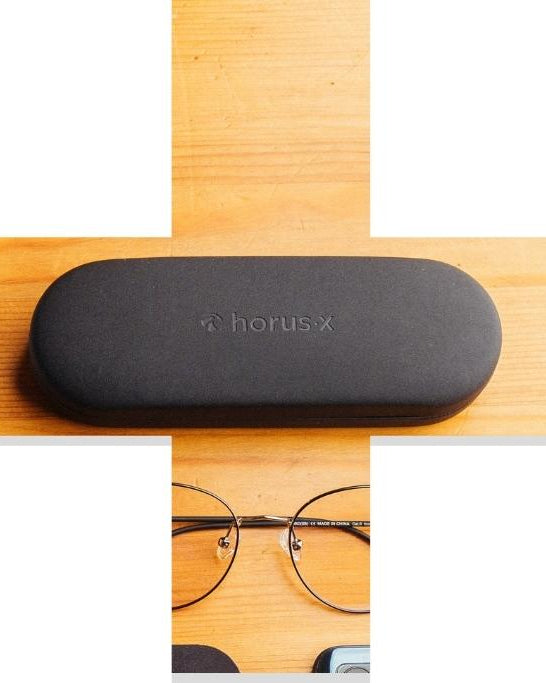What is blue light? | Protecting yourself from the dangers of blue light
We’ve all been exposed to blue light, whether we realize it or not. In fact, you’re reading this article on a digital device that emits plenty of it.
While the term itself is simple, it conceals a complex reality. It’s hard to measure the potential damage blue light exposure has on our eyes and overall health because the harmful effects are subtle and not always immediate.
However, as our obsession with technology grows, more and more studies are identifying the dangers of blue light.
What is blue light?

Blue light is part of the high-energy visible colour spectrum, impacting the sleep cycles, eye health and overall well-being of those who experience overexposure. Which, is nearly all of us, thanks to our increased daily screen use.
Types of blue light
Blue light can be split into two types:
- 🌅 Natural blue light: This is the blue light naturally emitted by the sun.
- 💻 Artificial blue light: This blue light emitted by technological devices.
Where is blue light in the visible light spectrum?

Blue light is naturally present in the environment and isn’t inherently harmful. In the right dose, it can actually be beneficial. The problem is we’re not getting the right dose, and are exposed to too much blue light at the wrong times of day via screens and artificial lights (LED and co.).
The wavelengths of blue light

Without diving too deep into physics, there’s an inverse relationship between the wavelength of light (where it sits on the spectrum) and the amount of energy it contains:
👉 Long wavelengths have less energy, and short wavelengths have more.
- 🔴 Red light, with long wavelengths, contains less energy (between 620 – 750 nanometers)
- 🔵 Blue light, with short wavelengths, contains more energy. (between 380 – 500 nanometers)
This means blue light wavelengths have more “intense” characteristics and impact is different depending on type and time of day.
- In the evening: All blue light (380-500 nm) can have a negative impact.
- During the day: Blue-violet light (380-450 nm) poses the greatest risk to your eyes.
Natural blue light: An essential part of everyday life
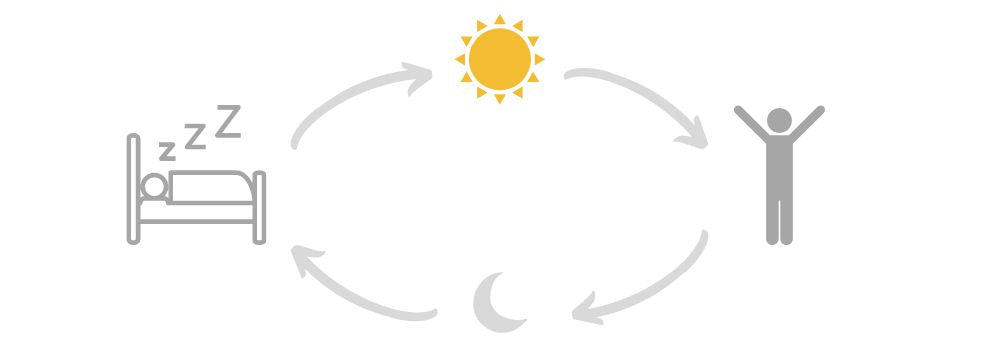
Natural blue light changes in intensity and temperature throughout the day, helping regulate us. It promotes a balanced sleep schedule, helps us stay alert, and boosts our mood and cognitive function.
You only have to leave your house (difficult) and look up at the sky to see it. The entire light spectrum passes through our atmosphere, but the sky generally appears blue because the waves of blue light bounce and scatter off the particles of nitrogen and oxygen present in our atmosphere.
In short, blue light is everywhere, but that doesn’t mean it’s a bad thing.
Artificial blue light: Harmful in the short and long term

The most harmful range of blue light is between 380 and 450 nanometers, due to its short, high-energy wavelengths. However, the whole spectrum of blue light (380-500 nm) has an impact.
That’s why excessive exposure to blue light could result in both short and long-term eye damage and disrupt sleep patterns.
Examples of artificial blue light:
- 💡LED lighting: Modern LED lights produce both white and blue light.
- 📺TV & computer screens: Whether it's working, catching up on Rings of Power or playing Witcher 3, LCD and LED screens emit a substantial amount of blue light.
- 🎮Cellphones and tablets: Like computers and TVs, your handheld devices also emit a lot of blue light.
Basically, screens and our doomscrolling, binge-watching, marathon gaming natures have a lot to answer for.
In fact, multiple studies have:
- ⌚ Predicted that throughout a lifetime we will spend between 18 to 22 years online.
- ⏰Found that screen time for children aged 1 to 6 has doubled since COVID-19 and tripled in the last 10 years, leading to more harmful effects on young eyes.
The dangers of blue light

Did you know on average we spend almost 7 hours a day looking at screens? This leads to overexposure to blue light and comes with negative side effects.
Short-term effects of blue light exposure
Digital eye strain:
If you suffer from blurred vision, itchy or stinging eyes, headaches, and tired or dry eye then you could be experiencing the effects of Digital Eye Strain (also known as Computer Vision Syndrome).
This is often caused by long hours in front of screens, the blue light it emits and the incorrect positioning and distance from the screen most of us are guilty of.
Blue light and sleep: The impact
Melatonin is the hormone that regulates your sleep. It helps to maintain an energy balance throughout the day:
- 📉 In the morning: Natural blue light reduces melatonin levels, helping us wake up naturally.
- 📈 In the evening: Melatonin levels rise, aiding peaceful sleep.
👨🏫 This light is a necessity, especially at the start of the day. As early as 1981, Dr. Charles Czeisler of Harvard Medical School highlighted the importance of daylight to synchronize the internal clock with the environment.
But artificial blue light impacts melatonin production, causing issues with falling (and staying) asleep. That’s because it tricks your brain into thinking its daylight and that you should be awake. It then consequently slows down melatonin production and confuses our body’s natural circadian rhythm.
While there are supplements and alternatives to melatonin you can try to aid your slumber, the best thing to do is respect your body and minimize overexposure to blue light by turning off your devices (or wearing blue light blocking glasses) at night.
Acute exposure to intense blue light can lead to permanent, partial or total loss of visual acuity over time. The ANSES expert appraisal carried out in 2010 highlighted the toxicity of blue light for the retina. The new scientific data support this result and identify short-term phototoxic effects related to acute exposure to blue-rich light, and long-term effects related to chronic exposure over several years, which may increase the risks. onset of age-related macular degeneration (AMD). Certain experimental studies on animals also show that the retina is more vulnerable to the effects of phototoxicity during the night.
Long-term effects of blue light exposure

Loss of vision (AMD)
Prolonged exposure to blue light could cause damage to the thin, multi-layered tissue of the retina and contribute to the development of Age-related Macular Degeneration (AMD).
A report published by the American Macular Degeneration Foundation (AMDF) found that "blue rays in the spectrum seem to accelerate age-related macular degeneration (AMD) more than any other ray in the spectrum."
ADHD in children
While environmental factors like exposure to blue light can’t cause ADHD, it can certainly worsen symptoms. They can become overstimulated, struggle with light sensitivity, and find it even harder to fall asleep than the usual person, contributing to long-term health effects.
Development of myopia
Near-sightedness, also known as myopia, is now considered an epidemic, according to the American Academy of Ophthalmology. This can occur in adults and children who spend too much time looking at screens, as studies have observed overexposure to "blue light resulted in inhibition of axial elongation in human eyes". This, in essence, means early research is finding a link between artificial blue light and its influence on ocular growth, contributing to myopia.
How to protect yourself from the dangers of blue light

To foster good eye health and reduce the risk of eye disease you should:
- Reduce time spent looking at screens
- Avoid blue light exposure before bed
- Activate blue light filters and other night modes on your devices
- Invest in blue light glasses for absolute protection
While all of these can have a positive impact, the most effective way to protect yourself from blue light is to wear blue light blocking glasses that filter out the most harmful rays for your protection.
How to choose the best blue light glasses

It is essential to choose a high-quality pair of blue light glasses from a company that specifies how much blue light is filtered. You should always ensure:
- 100% filtration of ultraviolet rays (A, B and C)
- Filtration close to 100% on the ultra-harmful spectrum between 380 and 430 nanometers
- Powerful anti-reflection or anti-glare coating
- An ergonomic design that sits comfortably on your face for extended periods
- Certification by an independent laboratory
- A comprehensive guarantee (like Horus X’s lifetime warranty)
The best blue light glasses for evenings:
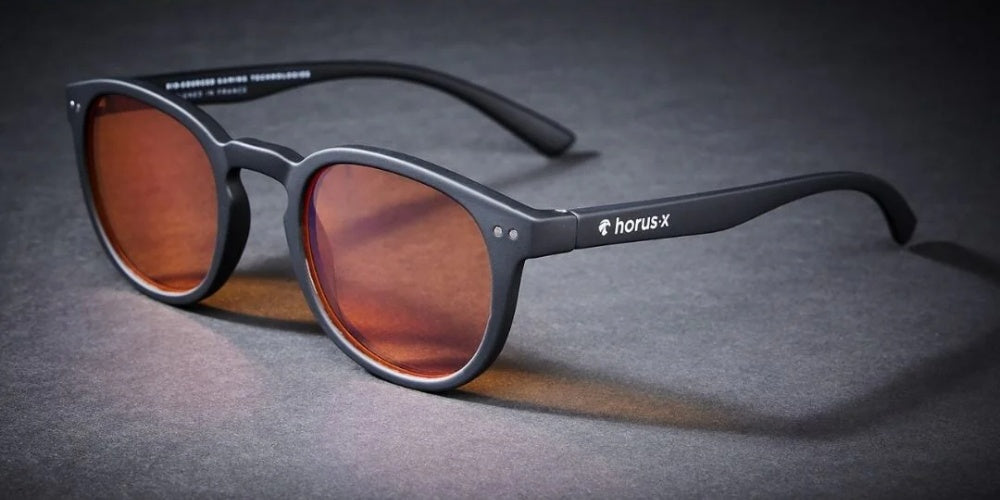
Horus X’s The One gaming glasses or the round Urban gaming glasses come equipped with an amber filter, ideal for promoting ambient evening colors while filtering blue light.
The best blue light glasses for gaming:

Horus X’s Urban Revolution gaming glasses are stylish, comfortable, and suit a headset well. Or, if you’re a big esports fan, and in particular a big League of Legends fan, you should check out Horus X’s RIOT collection for ultimate protection and longer play times.
The best blue light glasses for office working or casual wear:

Clear lens blue light glasses are preferable for those who want to wear them all day long. Horus X’s Nomad collection ticks this box, matching protection with style.
The best blue light glasses for kids:

Protecting young eyes that haven’t fully developed is crucial. Horus X’s children's blue light glasses help prevent long term damage.
Bibliography of studies on the impact of blue light
Bibliography and further reading
- Effects on human health and the environment of systems using LEDsExpertise Anses 2019 https://www.anses.fr/fr/system/files/PRES2019DPA01.pdf
- Ministry of Solidarity and Health https://solidarites-sante.gouv.fr/sante-et-environnement/activites-humanes/exposure-aux-ondes/article/effets-sur-la-sante-de-l-exposition -in-the-blue-light
- The Vision Council, "Digital Eye Fatigue in the USA: The State of the Art", Viewpoints, 2015, in The Dangers of Blue Light, 2015
- Report of the round table of March 16, 2013, in The dangers of blue light, 2015
- "Photobiological safety of lamps and luminaires using lamps", EN 62471-1; "Application of EN 62471 to light sources and luminaires for blue light risk assessment", EN 62778
- Kasun Ratnayake et al, "Blue light excited retinal intercepts cellular signaling", Scientific Reports, 2018.
- Accumulation of lipofuscin in cultured retinal pigment epithelial cells results in increased sensitivity to blue light irradiation", Free radic Biological Medicine, 1997.
- Gianluca Tosini, Ian Ferguson and Kazuo Tsubota, "Effects of blue light on the circadian system and eye physiology", Molecular Vision, vol. January 22, 24, 2016
- Sebastien Point, "Blue Light and Exposure Limit Value: Response to ANSES" [archive], May 24, 2019.
- Huei-Bin Wang et al, "Blue light therapy improves circadian dysfunction as well as motor symptoms in two mouse models of Huntington's disease", Neurobiology of Sleep and Circadian Rhythms, vol. 2, January 2017
- Opinion on Potential risks to human health of Light Emitting Diodes (LEDs)" Scientific Committee on Health, the Environment and Emerging Risks SCHEER. June 6, 2018
- Blue light has a dark side.” Harvard Health Letter. August 13, 2018
- Krigel, Arthur (2016). "Light-induced retinal damage using different light sources, protocols, and rat strains reveals LED phototoxicity". Cordeliers Research Center. Paris Descartes University, France (Sorbonne University Faculty of Medicine, Physiology Department). Consulted in December
- Light-emitting diodes caused retinal damage and its wavelength dependence in vivo". International Journal of Ophthalmology, Vol. 10, No. 2. 2017 Feb 18. 9, 201



